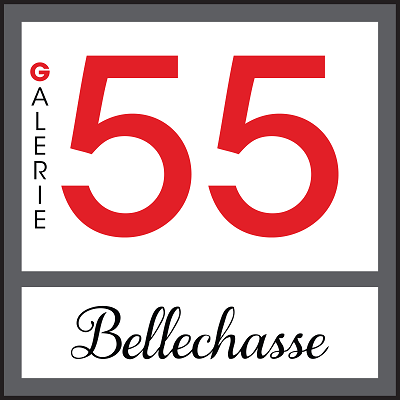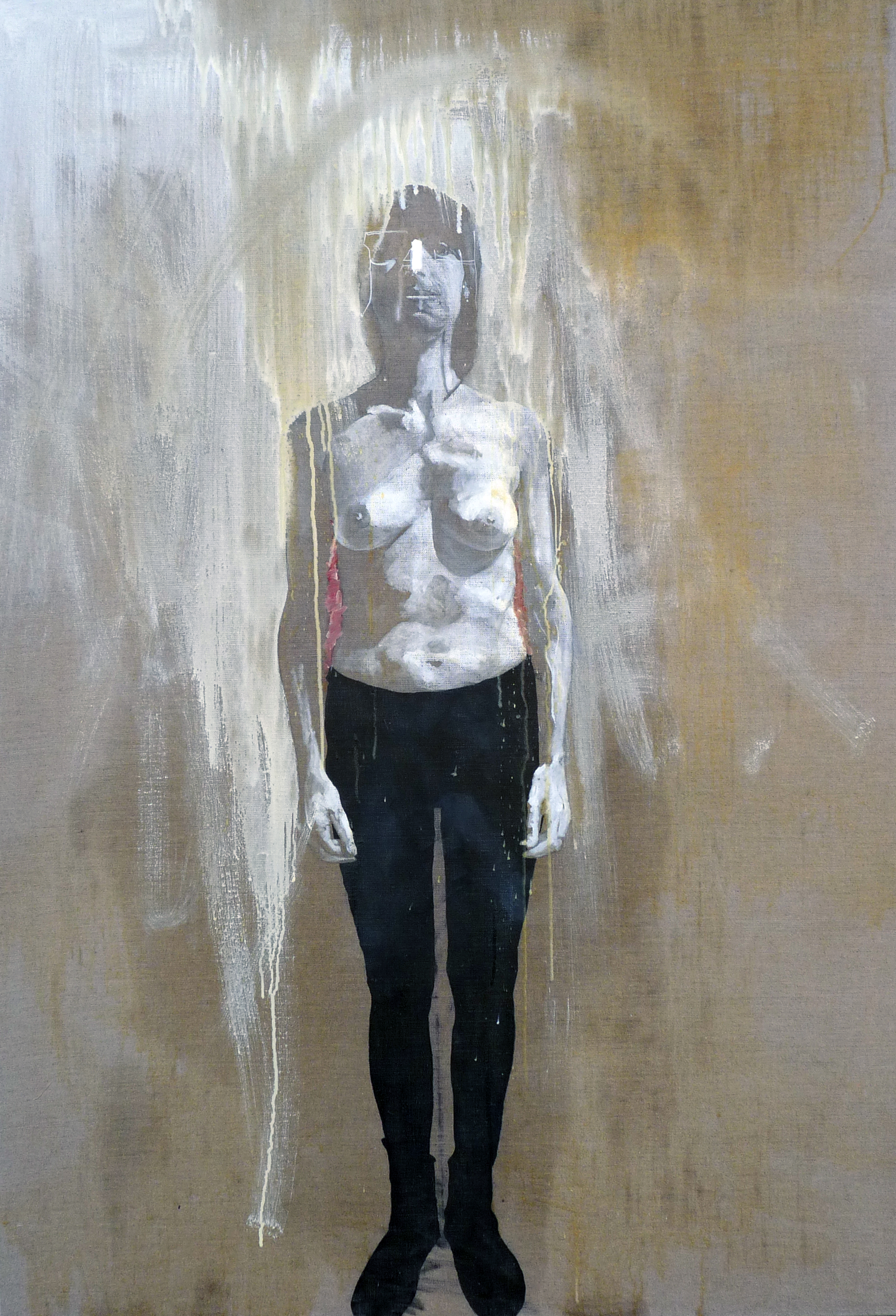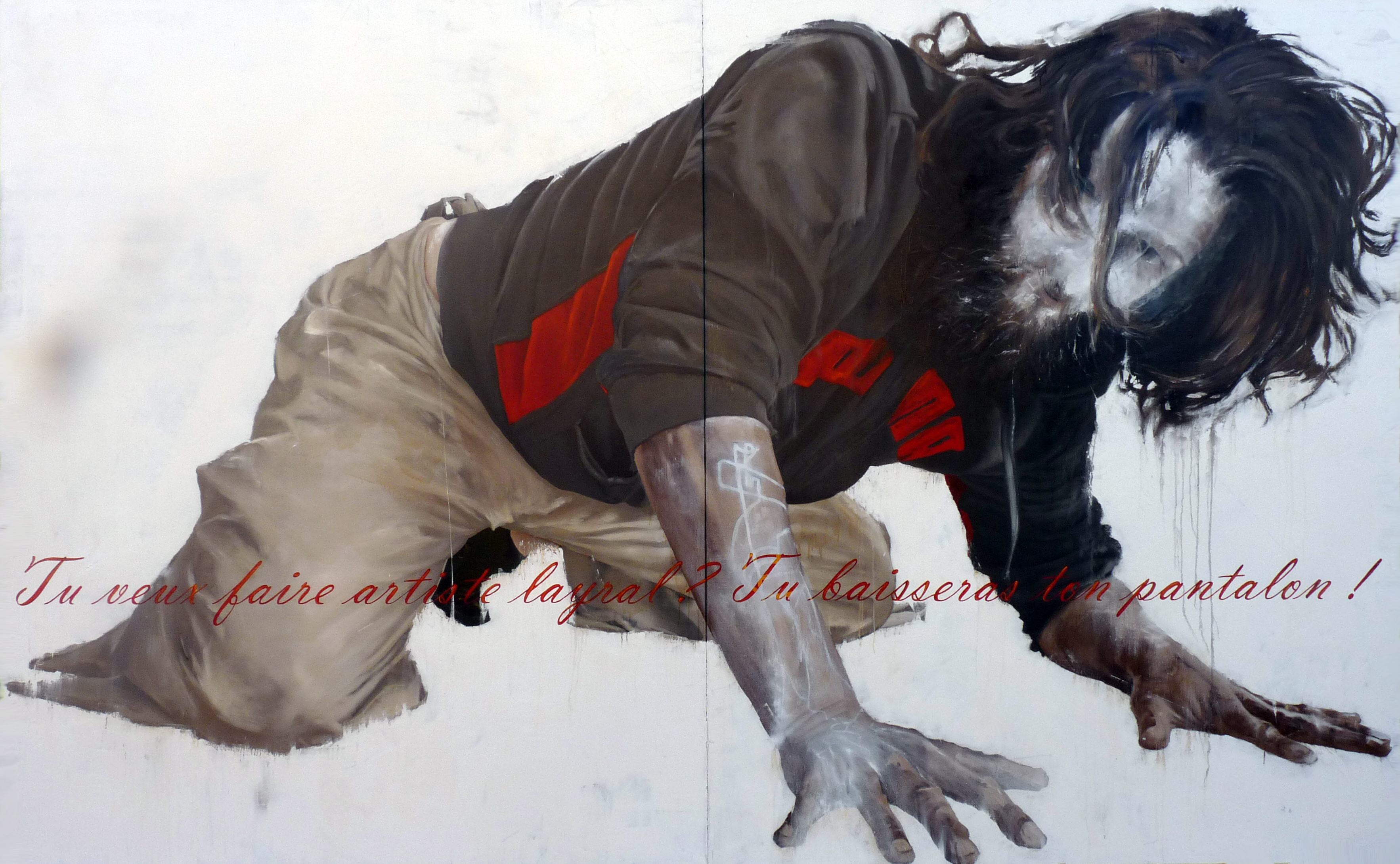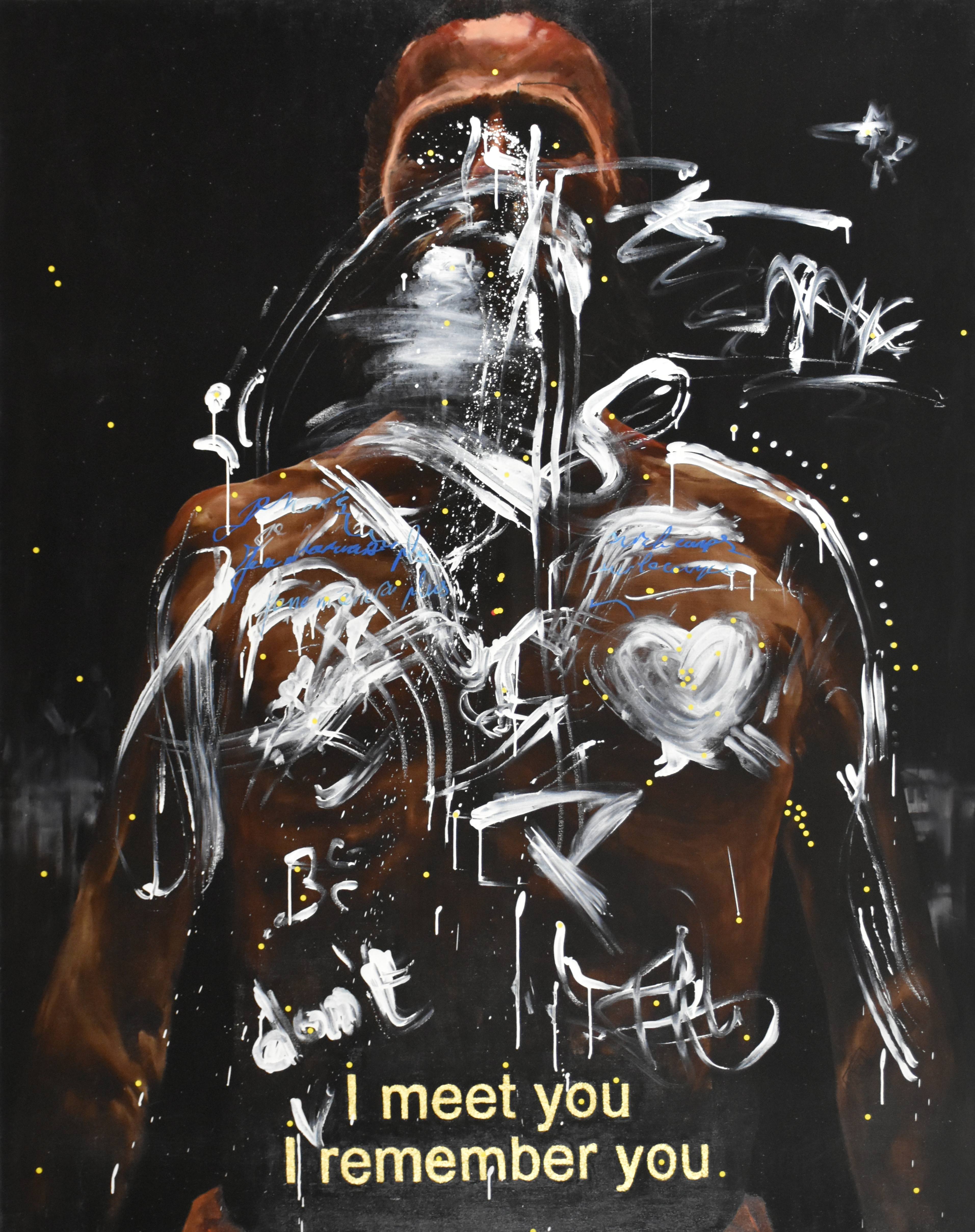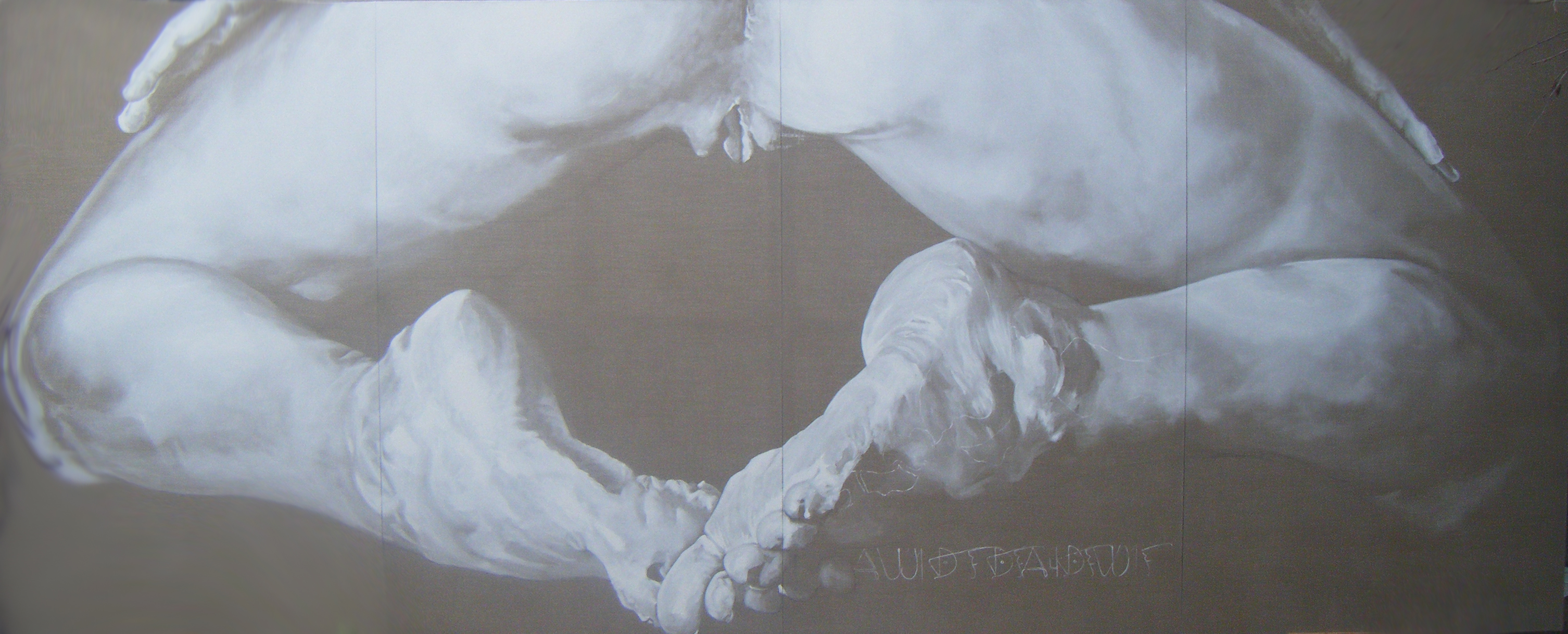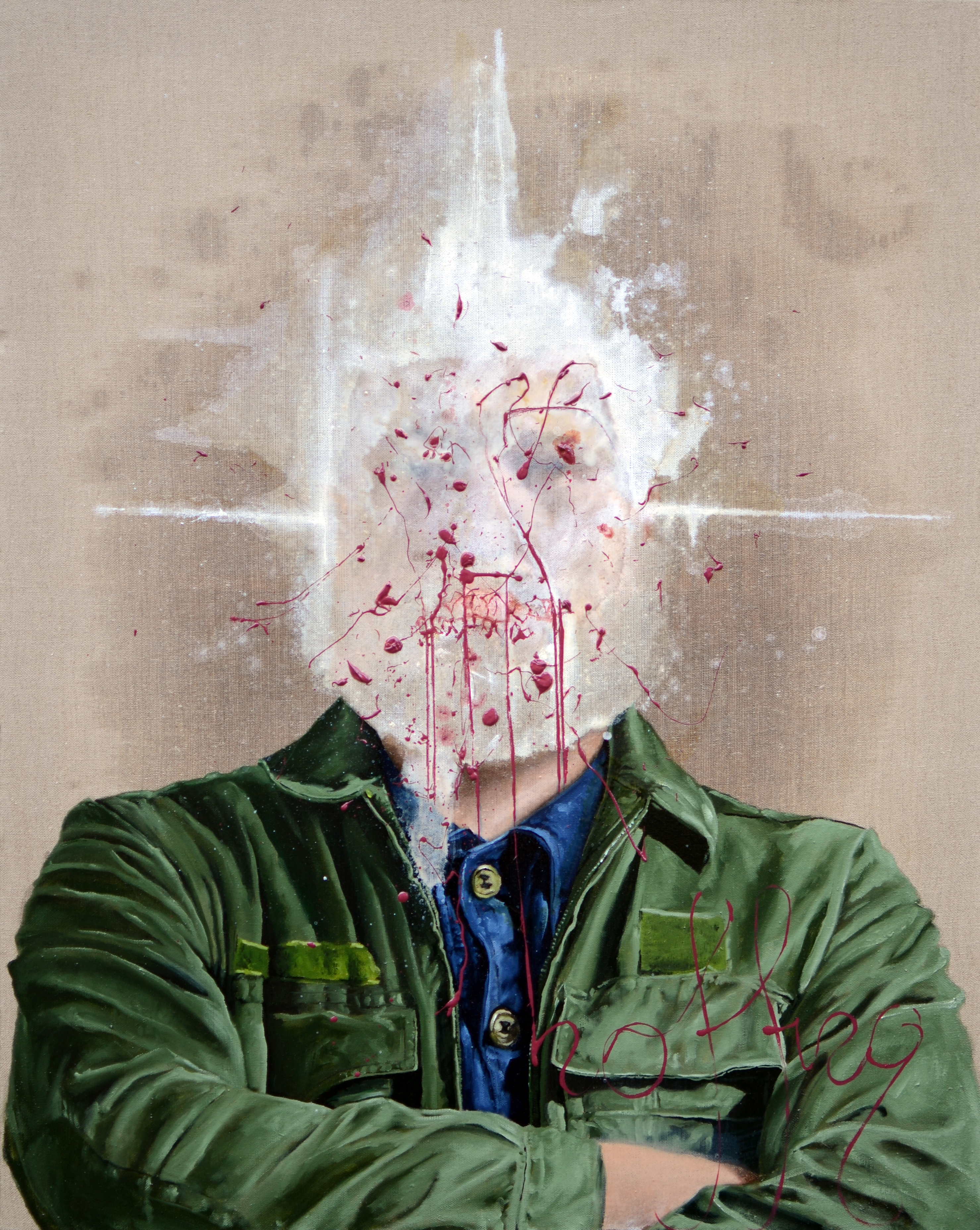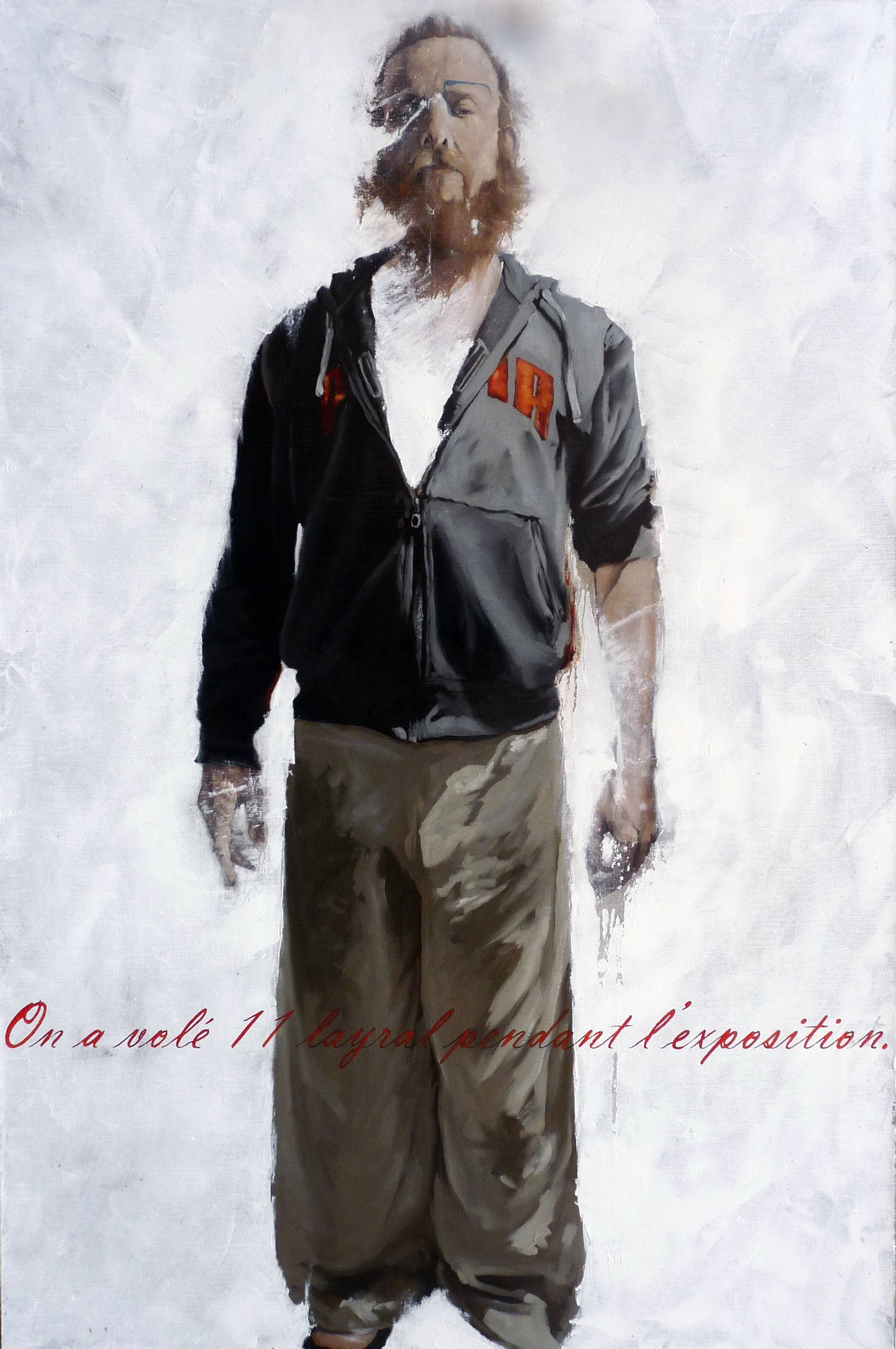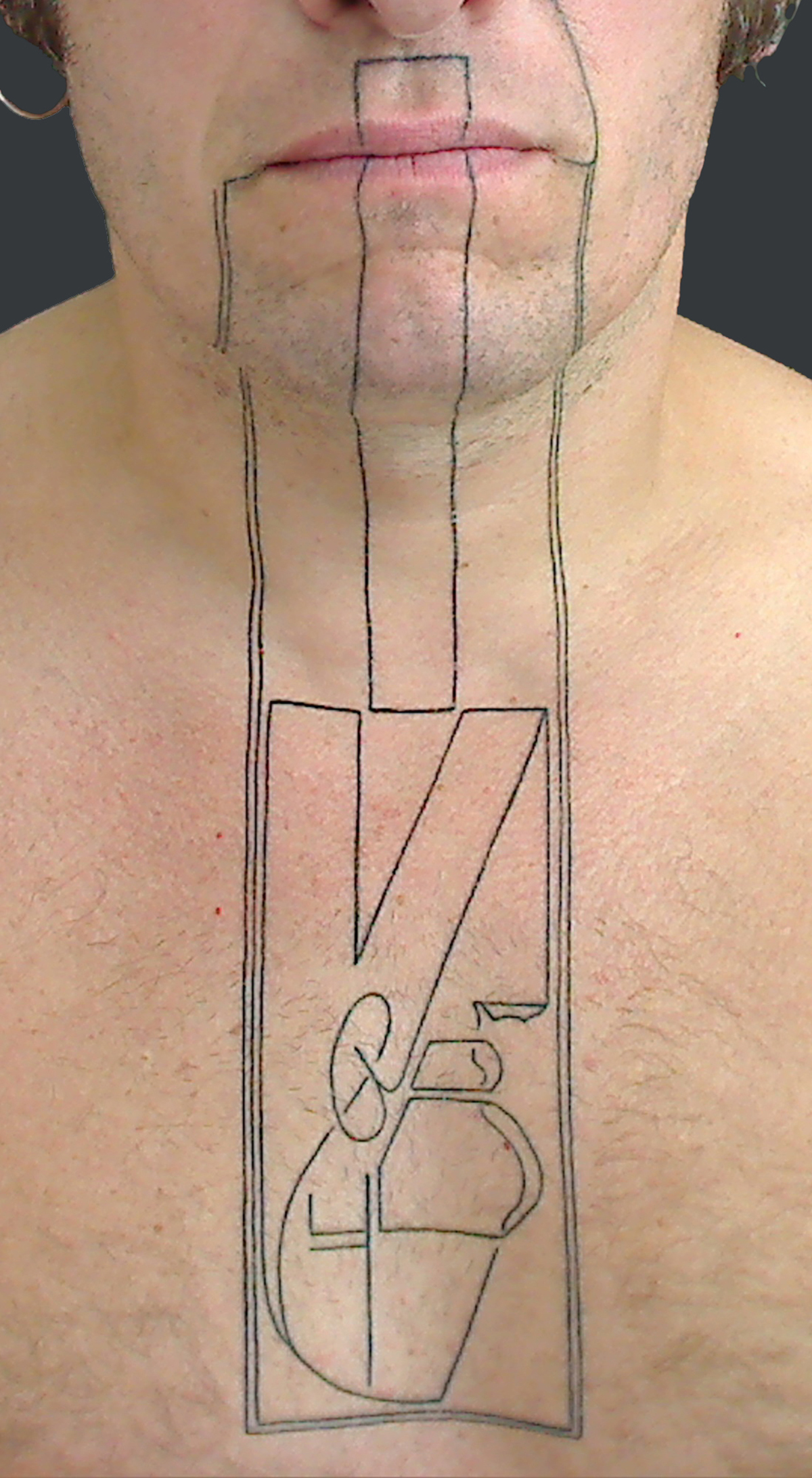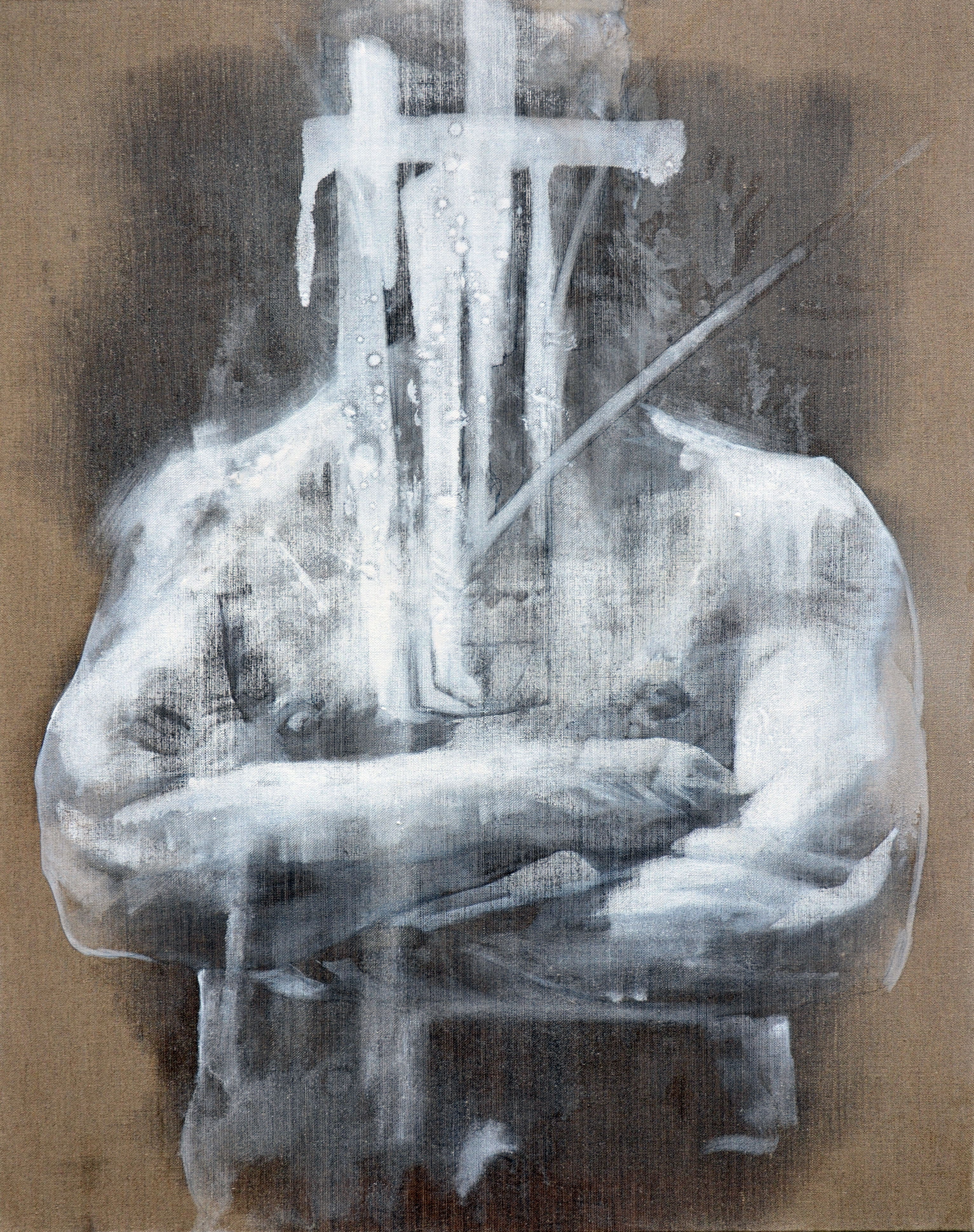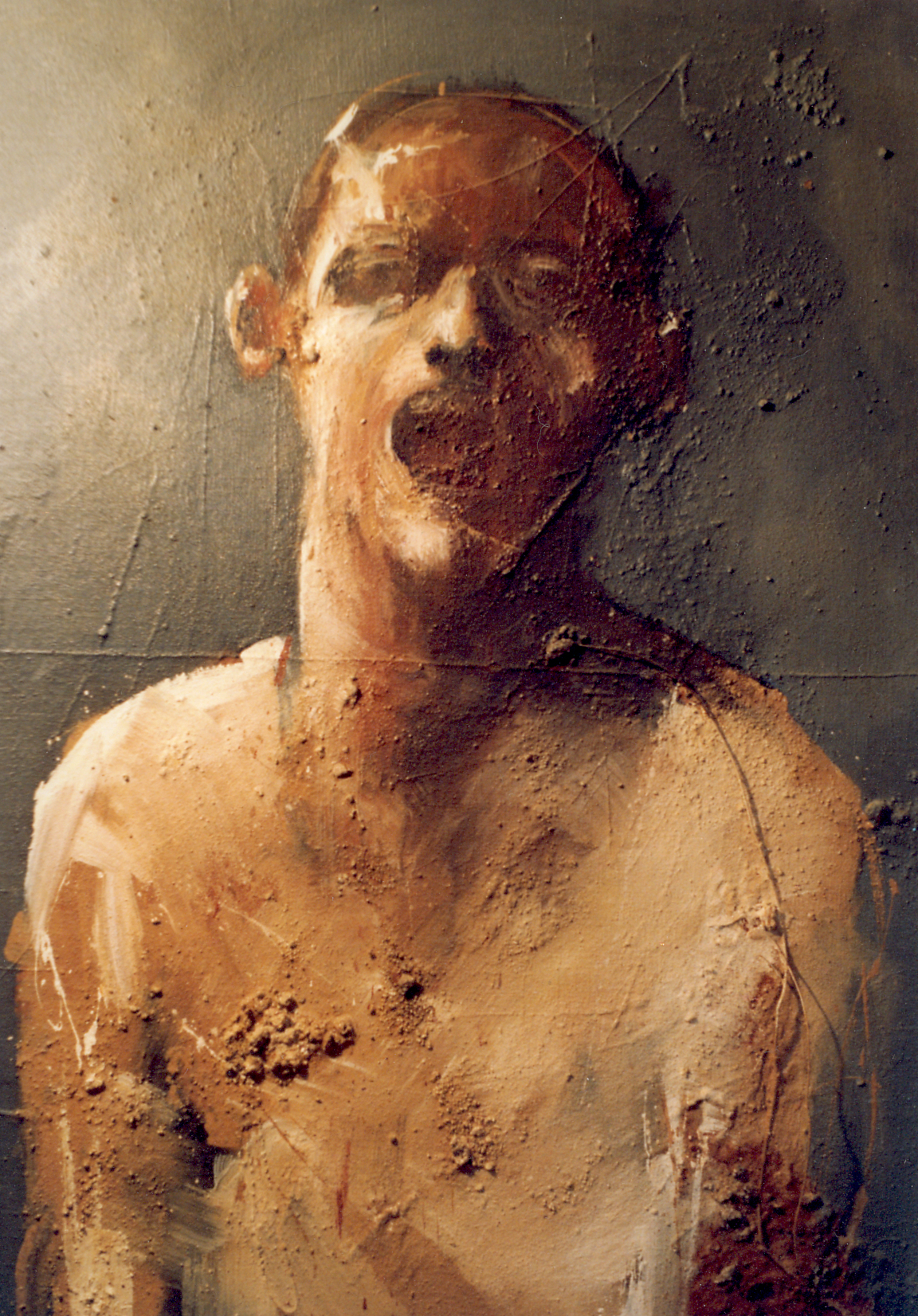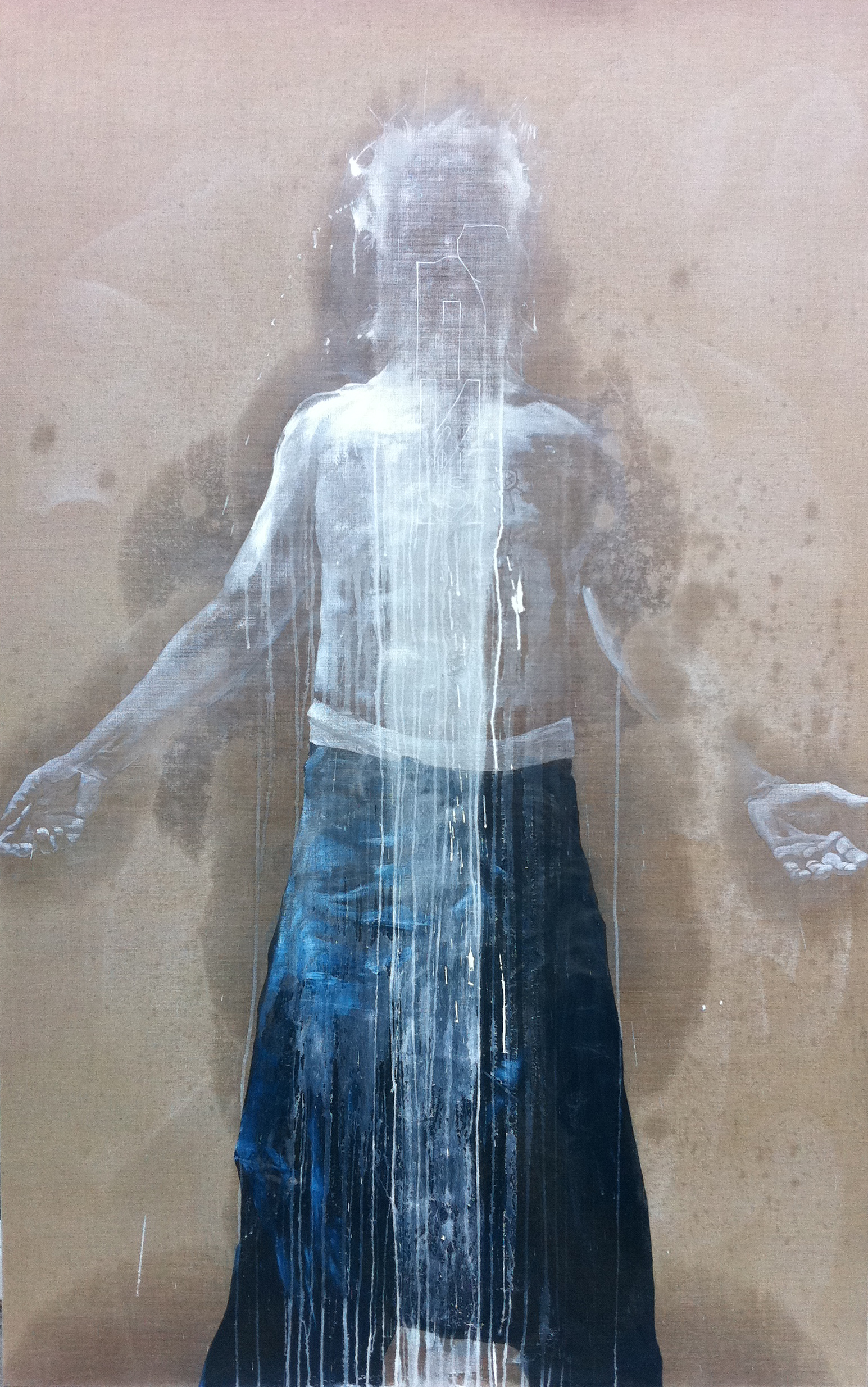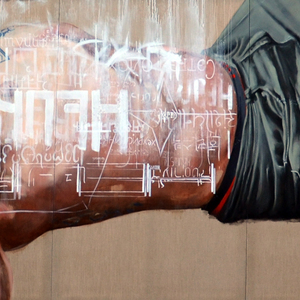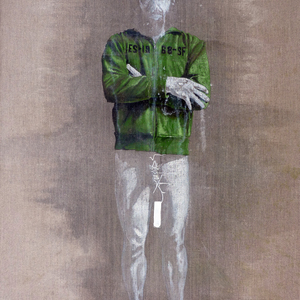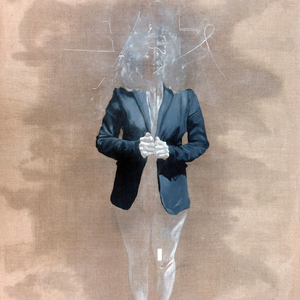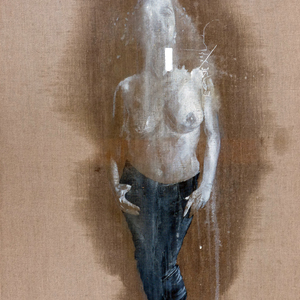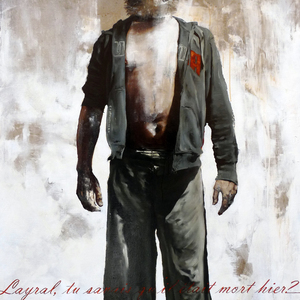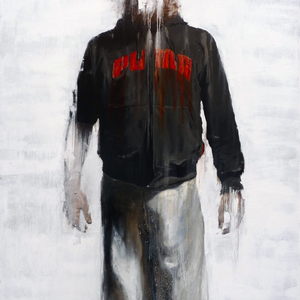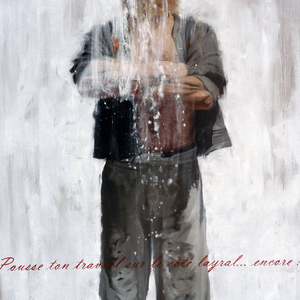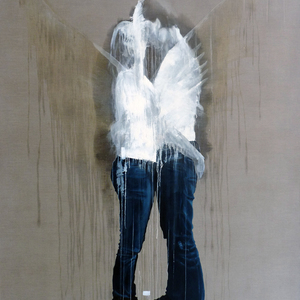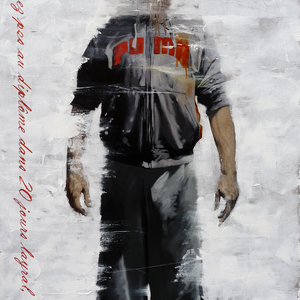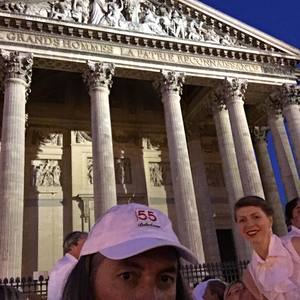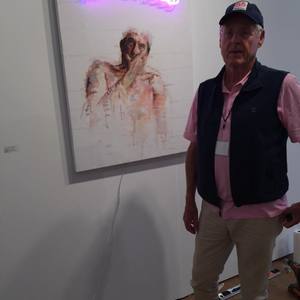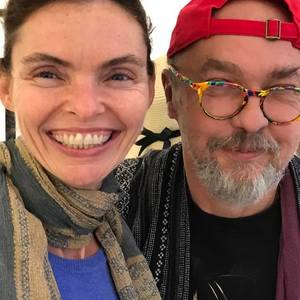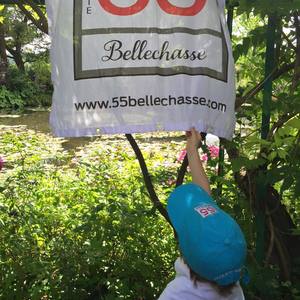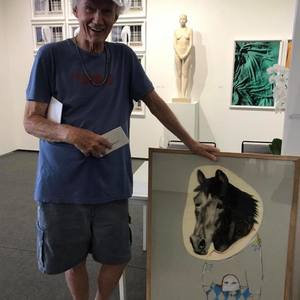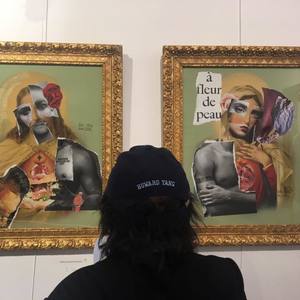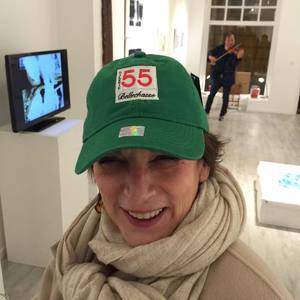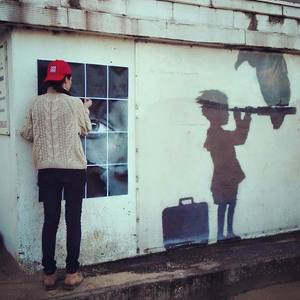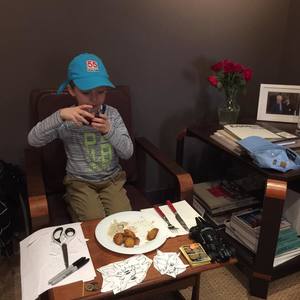Layral Sébastien (France)
Sebastien Layral comes from the woods and the earth. He carries the proud serenity of the Causse on his shoulders. Born in Rodez, the strong hills, he immediately became part of the elements. To note his belonging to a lineage, he readily evokes rough men, a direct relation to things and beings, an art of being camped on one’s ground.
Primitive roughness ... today, the brute canvas of the paintings that he stretches and prepares himself as a worker of the initial earth. During his childhood, about which he barely talks, the fiery desire to take a different path emerged. Not the path of the father or the clan, not that assigned by other people’s judgments, conveniences or norms. Far from the sirens of possession, it was a question of creating, of imagining ... After dreaming of becoming a surgeon and a priest, he was caught in the waves of a constant desire to draw. A certain continuity, if one looks back. There is no doubt that desire, which is the focus of the subject, can be defined as moving between the lines, taking place where no one expects it, becoming something else.
After a Bachelor's degree in applied arts, his experience at the Fine Arts Institute in Toulouse, from 1992 to 1995, placed a thorn in the wound opened in those days. Painting was no longer fashionable at the time, figuration even less. A deep misunderstanding existed between the student Layral and school. Dismissed without explanation before the end of his third year, he developed a bitterness at the time that evolved into clarity. The lessons of this disappointment are diverse and essentially fruitful. First, stubbornness: if painting was so badly considered, it was the path Sebastien was to explore. Then, after closing the door, he forgot all about art history. The matter was closed. No hard drive, only random access memory. Finally, he developed a strong taste for philosophy asif a vaccum was to be filled.Little by little, the tripod he set up became his guideline : think, say, do.A balance between concept, relationship and experimentation.
Before everything else, being an artist means exploring possibilities and closely scrutinizing the main principles to better shake them. Becoming oneself by questioning what is now and what once was through thorough processes and faith in adventure. A nomadism that evokes Robert Filliou’s: whatever you do, do something else. A funny paradox is that the Air Force, where he performed his military service as a photo lab manager offered him a large room where he could do whatever he wanted ; paint.
Every course conceals its steps, its back roads. In reality, these are very often approaches. Before opening an art studio in 1998 and careering in art, Sebastien Layral worked in an institute working with young autists for two years. The idea was to produce an exhibition of their art work. One can easily imagine what was at stake in this project regarding the artist's upcoming approach: hearing the voice - even unlikely, even tiny - of others to put oneself at their service in one way or another and follow their points of view. My nature is not mine, it does not bother me to change it. At the end of this necessarily experimental parenthesis, the path was laid, plowed by reason and emotion. The artist knew that questioning himself was required to move on and that the answers were not the main focus. He knew how to navigate through a sick society, which admits only one point of view and imposes it violently.
For several years, Sebastien Layral lived an internal crisis that almost secluded him in the art studio and at the same time unleashed a fiery search. It is hard to say for the artist what questioned, consciously or not, and guided this quest. Who am I? How to be the tree-self in the forest of other-possibles? Those were some thoughts that might have lead Sebastien during his personal strife. In this great rustling silence, self-portraits and portraits would be the path, enriched, enlarged from one experience to the next.
From the outset, the artist inscribed the presence of others in his own appearance. By inserting his face into bodies, borrowed from the clichés of press magazines or downloaded by Internet users encountered on a forum, he intiated an interactive approach via this "common self-portrait" that he would master over the years.
I am (in) another one. You are (in the heart of) me.
At the beginning of the 2000, Sebastien Layral placed the construction of each (self) portrait as a game of exchange, relation and gesture, via tools - computers, webcams, screens ... And yet, for a very short time, the model’s intervention guided the painter’s work, while sometimes contradicting it. The model is the center of everything. The exchanges, virtual or not, cross the digital and the flesh very quickly: texts of hidden conversations in the canvas, the artist’s imprint, and later tattoos performed in public. By giving the model the opportunity to observe, comment, guide, and contribute his work, he revisited the art of the portrait fixed by centuries of convention, turned rigide by a relation of domination in which the subject tends to become an object: inert, consenting, mute.
Conversely, Sebastien Layral has constantly introduced the model on the canvas to give him the tools of his own emancipation.
The "peintomaton", developed in 2004, was a turning point for Sebastien's performance art. During the happening, visitors were invited to become instant models. While the audience attended this live painting, the painter adapted his movements and the changes made by the model.The ideal triangle was formed : artist / model / public, where everyone’s position changes, where the desire to become another one only for a short moment through shifting one's acquired position invites the subject to step out of his comfort zone.
In 2005, at several exhibitions whose subject were the "ego" becoming an abundant @go, Layral refined the principles that shaped his work: think, say, do. His art gradually increased his reflexive dimension, expressed by values or virtues: openness, emotion, doubt, energy, desire. Faith in the power of words - his own, others' - was also widening: whether it was said, inscribed, coded, tattooed, they anchored the painting in a momentum that went beyond painting as a simple act.
An ever-broader confidence came when the public, visitors, close friends and strangers engaged with his dream of sharing with the public. My act of rebellion is to love, unlike what our society proposes.
The power of doing intensified when the artist agreed to give up details in place of energy in his exhibit INO ONI (2011-2013): now unsacred, fragile, ephemeral, painting had deinitely become more than a path to meet and unite with others.
A retrospective in 2012, spiced up with a touch of self-derision, confirmed how this double movement - art in series and constant renewal - led him on the river banks of becoming a fully mature artist. Another relationship to time was emerging: slower, longer, more abandoned to patience. The time it takes, how good it is to lose some in order to gain something else ; increased balance and density. The artist’s early beginnings in Aikido revealed a journey in which everything is linked: painting, writing, inscribing, tattooing, grasping, falling, and rising.
Dispossession, a watermark from the very beginning, more recently translated into the series DESIRE (2014), which was the breeding ground for the tree to infiltrate via its roots.By handing down the arms of ego, erasing narcissistic temptation as much as possible, humans become subjects and mirrors of each other.
Today, Sebastien Layral works in an open art studio that you can see from the street in Châtel-Guyon.
On summers, he installs a small living room on his doorstep: a bench, a ficus tree, water or coffee. His models are often those who stop by for a visit. In this former store, he trades proximity, love and peace. Painting is a way to affirmatively enter one's truth.
Danielle MAUREL
